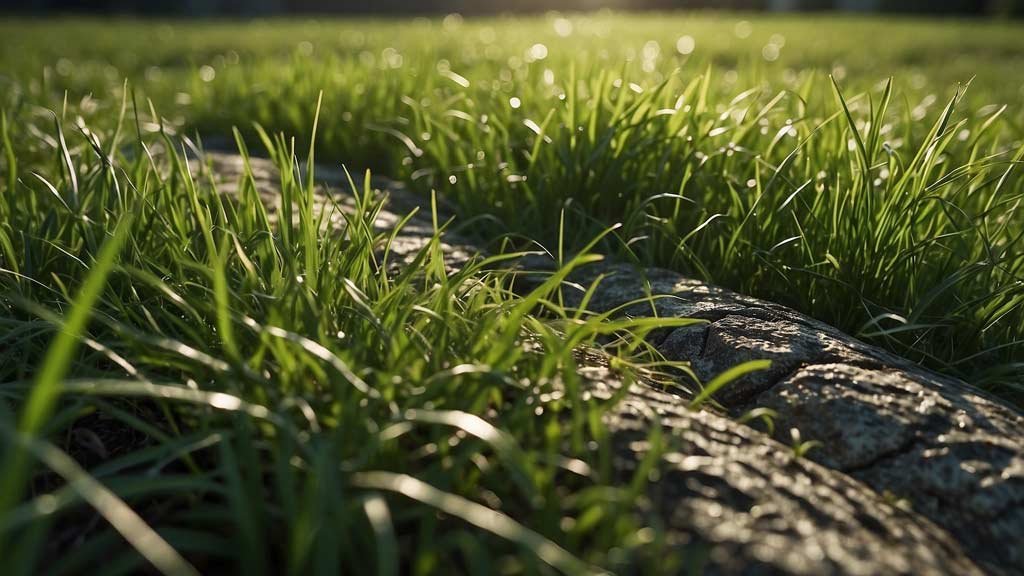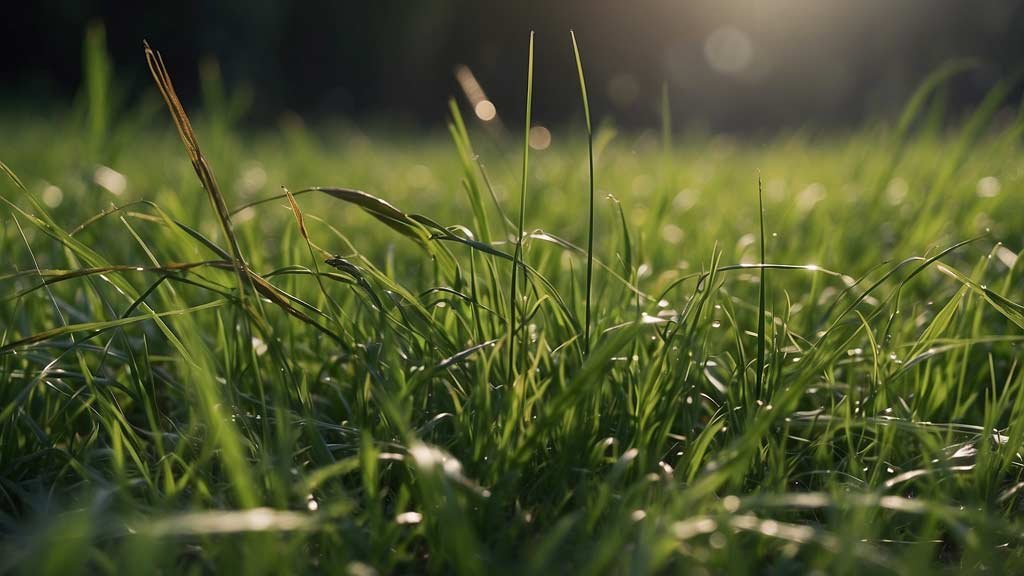The Weed That Wasn’t Just a Weed
Couch grass. Most gardeners curse it, pulling at its wiry rhizomes and muttering about how impossible it is to get rid of. It snakes under fences, sneaks back after hoeing, and refuses to die even when scorched by sun or frost. But here’s the twist: for centuries, this so-called nuisance wasn’t just a stubborn weed. It was medicine.
Traditional healers across Europe reached for couch grass when kidneys ached, when urine burned, or when stones made life unbearable. The Latin name Elymus repens (formerly Agropyron repens) might not roll off the tongue, but its reputation for soothing urinary troubles carried through generations. Before pharmacies lined the streets, people had their fields and hedgerows—and couch grass was a reliable ally.
Table of Contents
Couch Grass and the Kidneys
One of couch grass’s best-known uses is as a diuretic. That means it helps the body flush out water and salts by increasing urine production. If you’ve ever had a urinary tract infection, you know the desperate need for relief. Couch grass doesn’t act like an aggressive pharmaceutical diuretic that strips the body bare. Instead, it’s gentle. It encourages flow without leaving you depleted.
Herbalists often describe it as a “demulcent diuretic.” That’s a mouthful, but it basically means it soothes as it clears. The plant contains mucilage—gooey, slippery compounds that coat irritated tissues. Think of it like aloe for the inside of your urinary tract. Painful urination? Inflamed bladder walls? Couch grass comes in with that cooling, moist touch.
Traditional Uses for Kidney Health
- Dissolving or easing kidney stones
- Supporting the kidneys during infections
- Encouraging healthy urine output
- Relieving burning sensations while urinating
Old herbal texts from Germany, France, and England often mention couch grass tea prescribed for kidney gravel, cystitis, and even enlarged prostate. It was cheap, abundant, and didn’t need complicated preparation.
Bladder Health and Couch Grass
Let’s talk about the bladder—one of the most overlooked organs until it starts screaming at you in the middle of the night. Couch grass has long been used to calm an irritable bladder. The combination of its soothing mucilage and steady diuretic action makes it useful for recurring infections and mild bladder inflammation.
Some healers even gave couch grass decoctions to people recovering from gonorrhea, when irritation lingered in the urinary tract. It wasn’t a cure for the infection itself, but a way to help the body heal.
And while couch grass doesn’t kill bacteria in the way modern antibiotics do, it does change the environment of the urinary system. By increasing the volume of urine and washing away microbes, it makes it harder for infections to persist.
What’s in Couch Grass?
Herbalists sometimes talk about “plant spirit” and intuition, but couch grass also delivers on chemistry. Its active components include:
- Mucilage: soothing, anti-inflammatory, coats tissues
- Polysaccharides: thought to modulate immune response
- Fructans (like inulin and triticin): prebiotic fibers that may support gut health
- Silica: strengthens tissues, possibly helpful for connective health
- Saponins: mild cleansing effect
The blend of these compounds explains why couch grass feels both cooling and cleansing. It isn’t a blunt hammer; it works through synergy, balancing softness with steady elimination.
Couch Grass in Folk Medicine
Walk through old herbal manuscripts and you’ll see couch grass pop up in unexpected places. In Ireland, it was brewed for coughs and chest congestion. In parts of Scandinavia, the rhizomes were roasted and used as a famine food, even when ground into flour during grain harvest failures. Some early modern physicians believed it “purified the blood,” a phrase that often meant it reduced the buildup of waste in the body.
Farmers even noticed that livestock grazed on couch grass roots when they were sick. Cows and horses dug for them instinctively, as if guided by some ancient knowledge. That observation alone gave healers reason to trust its power.

Preparing Couch Grass Remedies
How did people actually use this stubborn root? Mostly as teas or decoctions. Fresh or dried rhizomes were simmered in water, strained, and sipped slowly. The taste? Bland, a little sweet, slightly grassy. Not unpleasant, but not exactly the stuff of cozy evening teas either.
Common Preparations
- Decoction: Simmer dried rhizomes in water for 10–15 minutes, strain, and drink warm.
- Infusion: For a lighter touch, steep chopped roots in hot water without boiling.
- Tincture: Extracted in alcohol for longer shelf life.
- Powder: Dried roots ground into powder, mixed into capsules or taken with water.
Herbalists often suggest combining couch grass with other urinary herbs like corn silk, bearberry, or dandelion leaf. Each adds a slightly different action, creating a more complete formula.
Couch Grass Beyond the Urinary System
Though its fame rests on kidneys and bladder, couch grass has other traditional uses worth mentioning.
- Digestive support: Thanks to its prebiotic fibers, it may gently encourage gut health.
- Respiratory health: Folk medicine sometimes used it for soothing coughs.
- Metabolic balance: Some texts hint at its role in managing mild diabetes symptoms, likely tied to its effect on fluid metabolism.
- Skin care: Poultices of the root were occasionally applied to sores or inflamed skin.
It’s not a superstar in all these areas, but it was versatile enough to earn respect as a household remedy.
Personal Reflection: The Weed That Keeps Coming Back
I’ve yanked couch grass out of my own garden beds more times than I care to count. At first, I despised it. The roots are like brittle spaghetti that snap the second you try to pull them, ensuring a comeback next spring. But one day, while making space for tomatoes, I stopped to look at the tangled mass in my hands. That same network of roots was the reason generations trusted it for kidney and bladder health. Its persistence in the soil mirrored its persistence in healing. Suddenly, I couldn’t quite hate it anymore.
Isn’t it strange how plants we fight hardest sometimes turn out to be our greatest helpers?
Safety and Considerations
For all its history, couch grass isn’t without caveats. Most people tolerate it well, but a few things are worth keeping in mind:
- Generally safe in moderate doses
- Rare allergic reactions possible, especially for people sensitive to grasses
- May interact with strong diuretics—doubling up could lead to electrolyte imbalances
- Not a substitute for antibiotics when serious infections occur
As with all herbs, it’s about context. Couch grass works best as supportive care, especially for mild urinary irritation or prevention. If there’s fever, blood in the urine, or severe pain, medical attention is non-negotiable.
Couch Grass in the Modern Herbal Cabinet
Today, couch grass doesn’t get as much attention as flashier herbs like cranberry or nettle. But it still holds a place in European herbal pharmacopeias. Some modern herbal companies sell couch grass tinctures, capsules, or teas, often marketed for urinary tract health.
Its lack of dramatic side effects makes it appealing for those who want something gentle, especially older adults or people prone to recurring infections. And while it won’t make headlines, couch grass continues to quietly do its job, just as it always has.
Final Thoughts on Couch Grass
There’s something poetic about couch grass. A plant cursed in gardens, praised in medicine. Tough, unyielding, but quietly generous. When kidneys struggle or the bladder complains, couch grass steps up—not with fireworks, but with steady, soothing care.
It reminds us that sometimes the remedies we need most are right under our feet, even when we try our hardest to get rid of them.
Article Sources
At AncientHerbsWisdom, our content relies on reputable sources, including peer-reviewed studies, to substantiate the information presented in our articles. Our primary objective is to ensure our content is thoroughly fact-checked, maintaining a commitment to accuracy, reliability, and trustworthiness.
- Blumenthal, M., Goldberg, A., & Brinckmann, J. (Eds.). (2000). Herbal medicine: Expanded Commission E monographs. Integrative Medicine Communications.
- Bone, K., & Mills, S. (2013). Principles and practice of phytotherapy: Modern herbal medicine (2nd ed.). Churchill Livingstone.
- European Medicines Agency. (2015). Assessment report on Elymus repens (L.) Gould, rhizome. EMA/HMPC/128988/2010. Retrieved from https://www.ema.europa.eu/en/documents/herbal-report/final-assessment-report-elymus-repens-l-gould-rhizome_en.pdf
- Grieve, M. (1971). A modern herbal: The medicinal, culinary, cosmetic and economic properties of herbs, grasses, fungi, shrubs & trees. Dover Publications.
- Hoffmann, D. (2003). Medical herbalism: The science and practice of herbal medicine. Healing Arts Press.
- Newall, C. A., Anderson, L. A., & Phillipson, J. D. (1996). Herbal medicines: A guide for health-care professionals. Pharmaceutical Press.
- Tyler, V. E., Brady, L. R., & Robbers, J. E. (1988). Pharmacognosy (9th ed.). Lea & Febiger.

